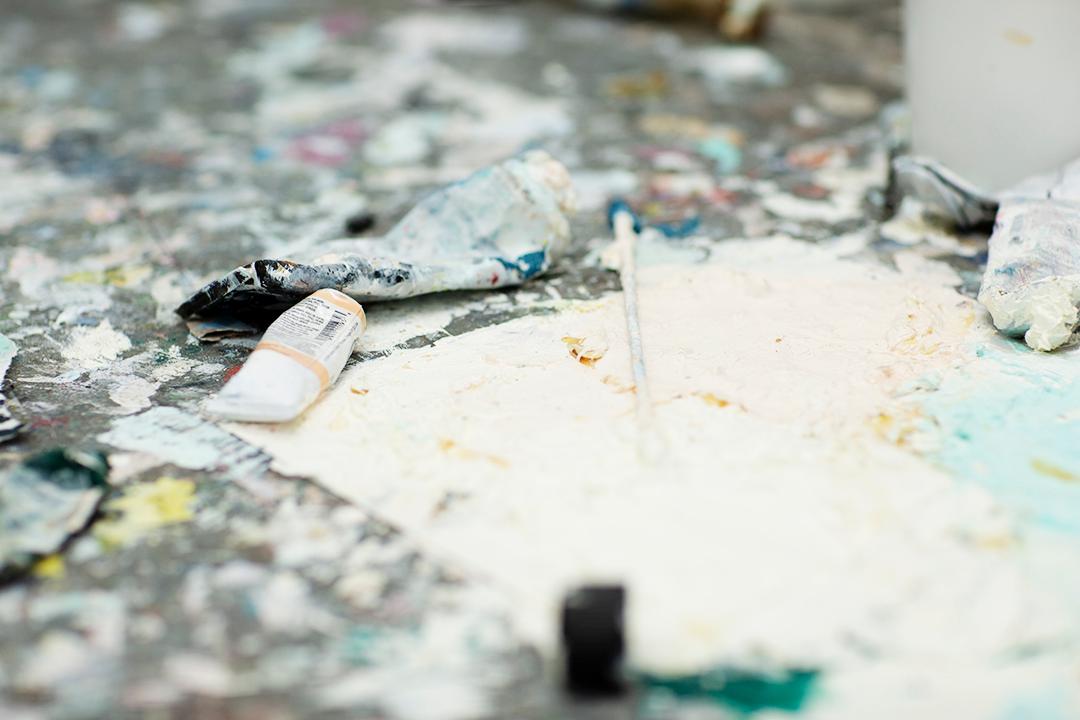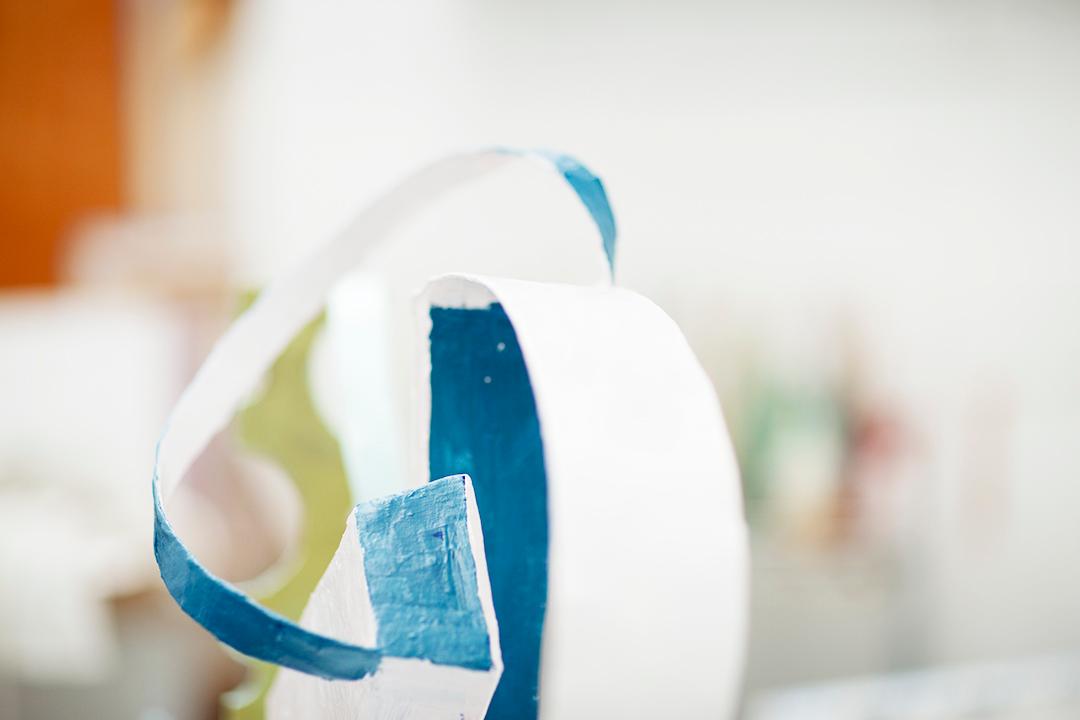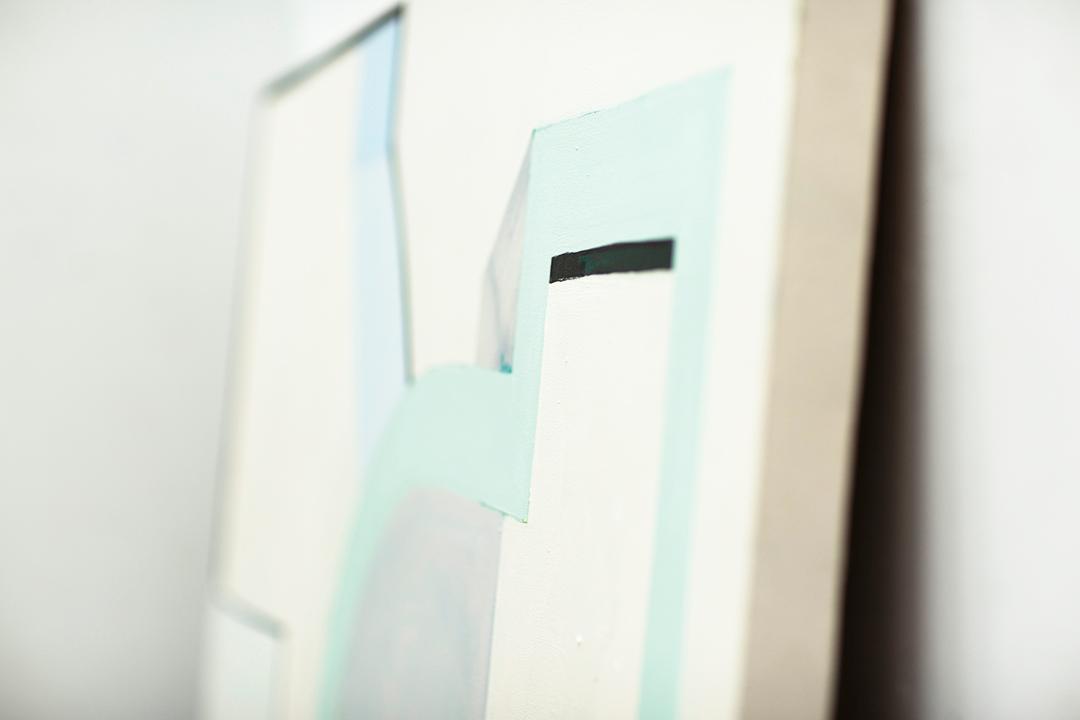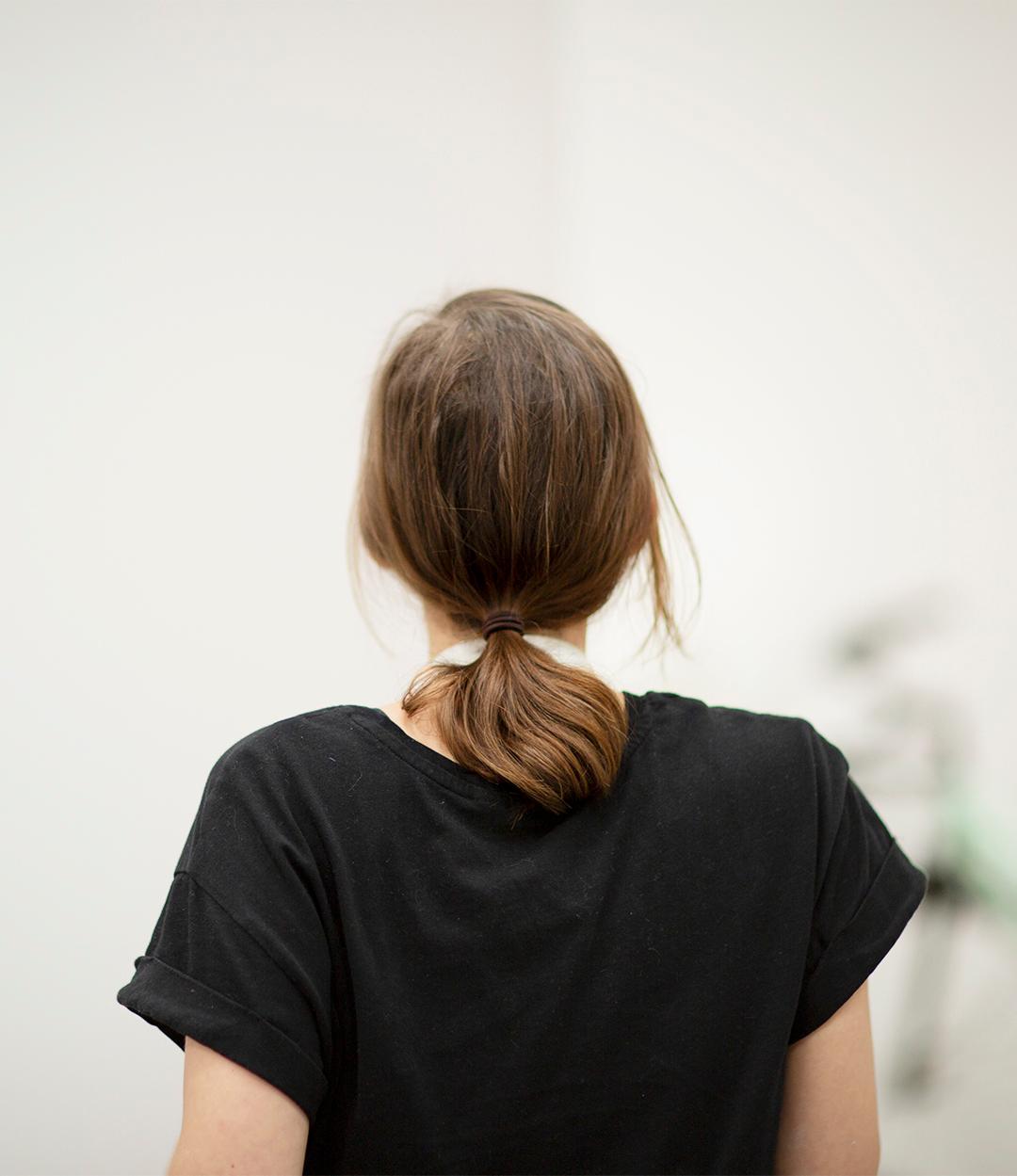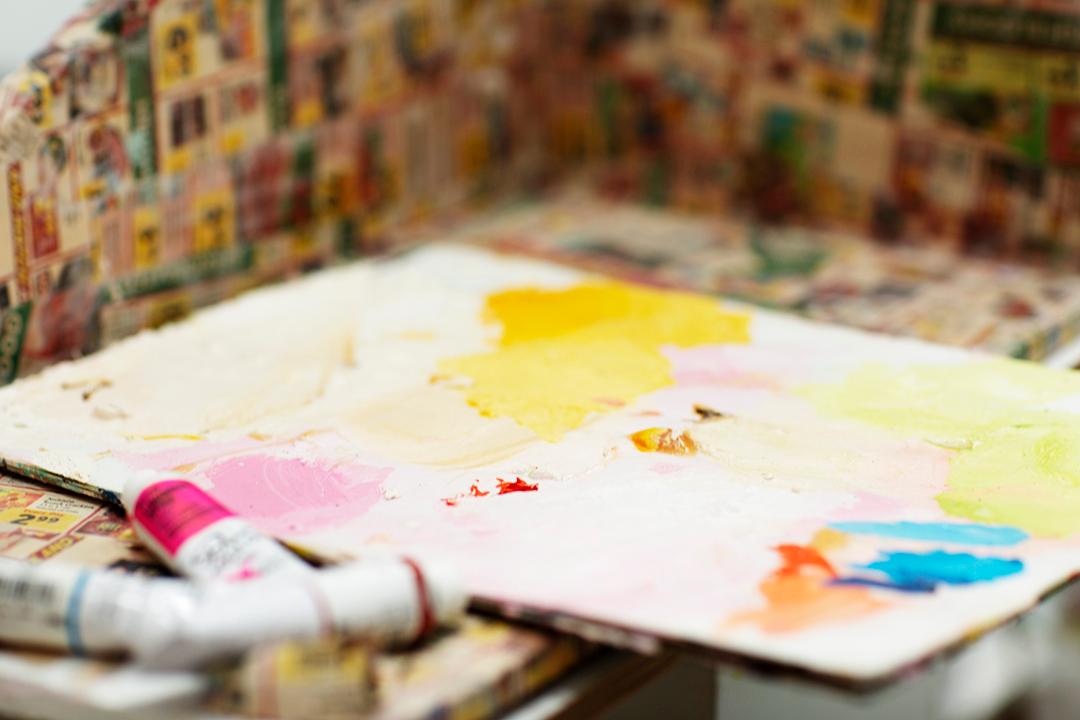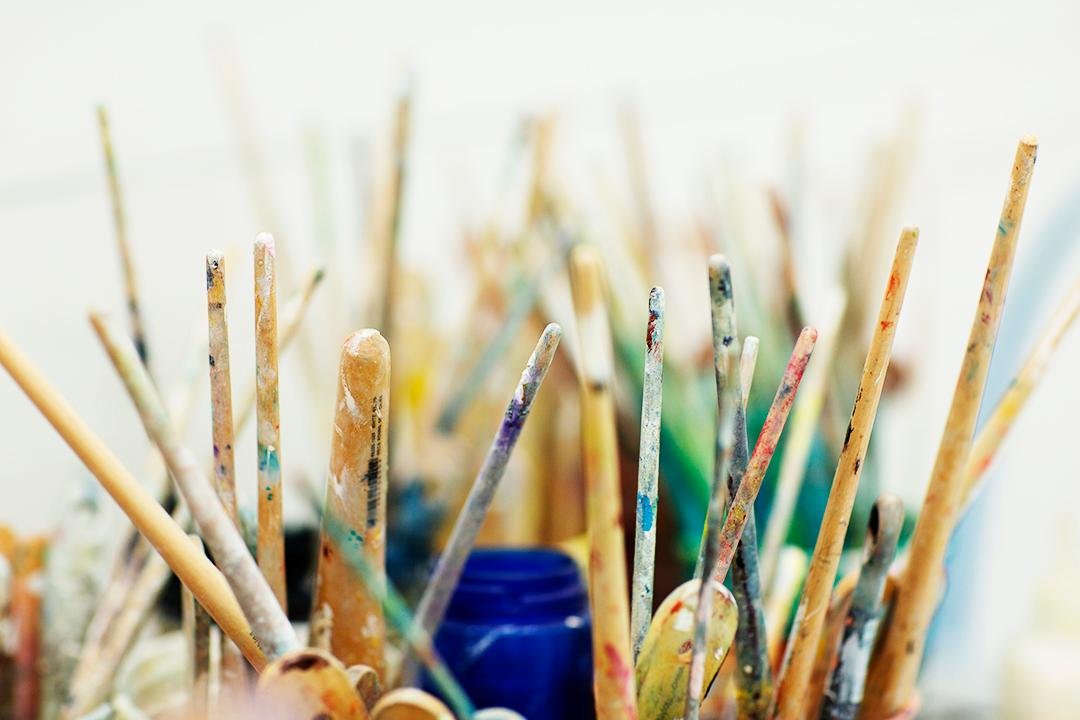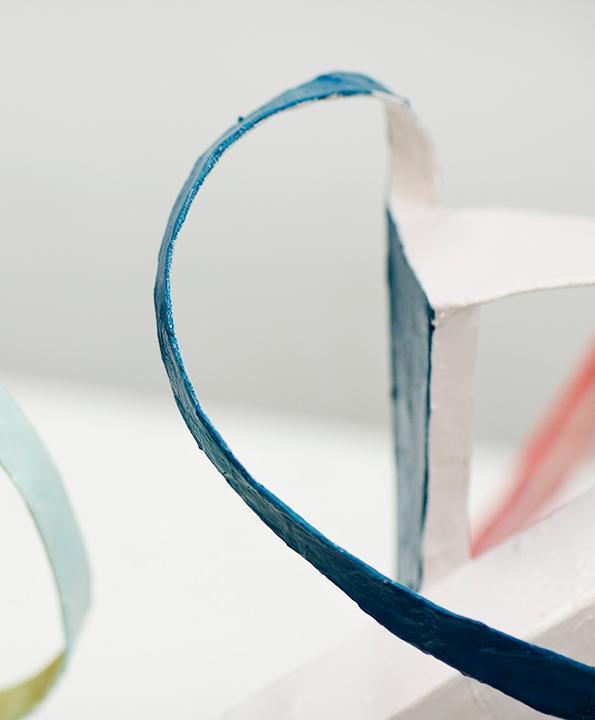Edition 13
Rebekah Goldstein
08.09.18 - 11.09.18
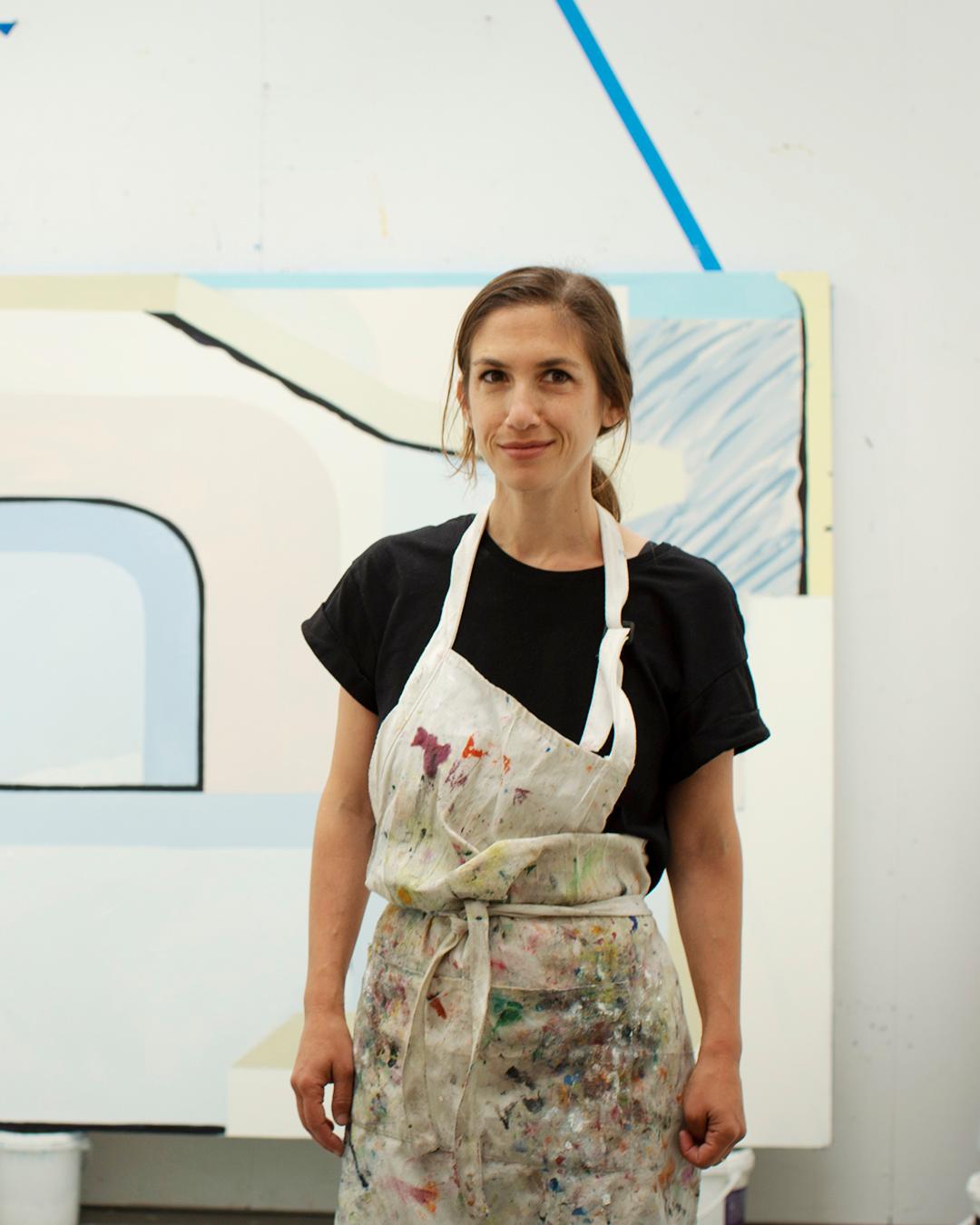
Entering Bay Area painter and sculptor Rebekah Goldstein’s studio is like walking into the middle of a conversation. You can’t help but notice how the art all seems to communicate with each other in a visual language—one that you’re eager to learn.
The color palette in any given piece seems to be one of the most striking aspects of Goldstein’s paintings. From muted pastels to unexpected pops of color, her work demands a moment of stillness. Goldstein’s art will have you immersed in memories in which a particular shade of pink appeared in a sunset, or a certain shade of blue covered the sky—creating a personal experience for viewers that is easily accessible and undeniably inviting. To achieve this effect, Goldstein draws inspiration from historical paintings like Richard Diebenkorn’s Ocean Park series and David Hockney’s Southern California backyard pool paintings; as well as the light that surrounds her home in the Bayview district of San Francisco, and the pastel-colored houses in her neighborhood.
The creation process is intuitive, according to Goldstein. After she makes a few initial choices, like picking out the shape of the canvas and the color palette, she says the material dictates what happens next, telling her exactly what it needs in order to develop.
Indeed, looking closely at her paintings, you can see the faint history of Goldstein’s process; the lines from shapes that were covered up or the small patch of color that peeks out from the top layer—remnants of the underpainting beneath. You get a sense that something happened here. Decisions were made; and then made again and again, until what you see on the surface is considered resolved. “I never know when they’re going to be done,” says Goldstein. “Generally, when they’re finished, there’s a sense of putting in the last piece of a jigsaw puzzle”.
For Limited Edition, Goldstein has created a large-scale painting and two small sculptures that include pastel color palettes and abstract shapes. The shapes you see in the paintings are strikingly similar to the shapes that you see in the sculptures—, in both in the formation and in the negative space. That’s when you realize that they’re communicating with one another—, and you’ve just joined the conversation.
